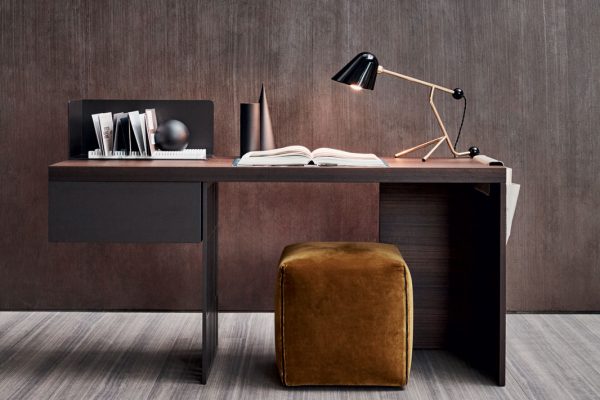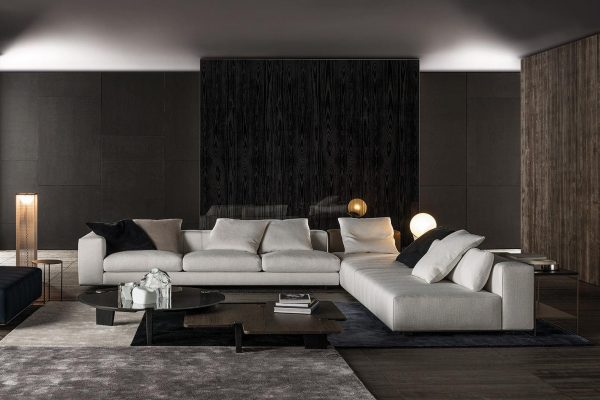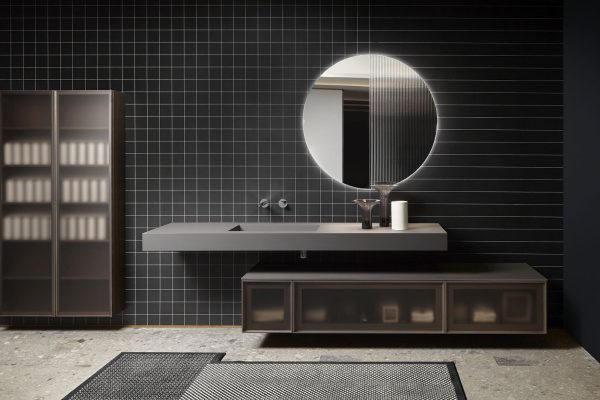The image of a mosaic probably hints at a classical style that can be distinguished by the quality of its details. Over the course of nearly 70 years,
Bisazza
has succeeded in the feat of transporting this solution into the contemporary, making it suitable for even the most modern luxury environments.
What sets the Bisazza brand apart today is precisely the harmonious union of craftsmanship and design embodied in the Vicenza-based company’s glass mosaics, which are the result of a careful study aimed at discovering the most innovative materials, their expert workmanship and the original decorative solutions that have resulted from collaboration with some of the world’s top designers and architects.
It is all this that has made Bisazza over the years a leading company in glass mosaic making, which is then used in exterior and interior decoration.
BISAZZA HISTORY HOW IT WAS BORN AND DEVELOPED
It is called Vetricolor, the first product mass-produced and marketed by the company that took the same name after being founded in 1956 in the Veneto town of Alte by Renato Bisazza. It was a glass tile made of colored paste, destined in some way to make history.
These were still the first steps for the company, which nevertheless soon realized its foresight: thanks in part to an advanced system that allowed for the industrial production of mosaic, starting in the 1960s Bisazza received major commissions from France and Italy, while the world of design and architecture realized the great endurance shown by glass mosaics, which were beginning to be considered an excellent solution for covering the exterior surfaces of buildings.
Increased production capacity and technological innovations were the prelude to the company’s expansion, which took its products not only to Europe, but also to Africa and the Middle East.
1989 is the year the company officially changed its name from “Vetricolor” to “Bisazza S.p.A.” In the following years, mosaics became more and more appreciated and began to spread widely in building interiors, leading the company to experiment with more and more solutions, always starting with the quality of materials and original proposals at the aesthetic level.
Collaborations with internationally renowned designers and architects began at this point, helping not only to expand Bisazza’s collections, but to make the company’s reputation even stronger worldwide, as evidenced by the opening of several flagship stores in Italy and abroad.
GLASS MOSAIC COLORS AND PECULIARITIES
Glass mosaic is the product that more than any other distinguishes Bisazza’s path, and it has been enriched over the years with various proposals.
It starts with solid color mosaics, modular from tiles available in different sizes and finishes but, above all, handcrafted and therefore all different from each other, a peculiarity that can make even a unique color solution original.
Blending, on the other hand, is the option for those seeking a striking glimpse, thanks to the random juxtaposition of small glass tiles of different colors, which can create a fascinating optical effect.
Mosaics that take advantage of shading, with tesserae arranged according to their gradation, from the lightest to the darkest, are ideal for making even a room characterized by a single color elegant and welcoming, while Bisazza decorations are the result of collaboration between the company and prestigious designers, capable of creating original textures inspired by floral motifs, textiles or with references to classical art. The latter is also recalled by the frieze collection, whose tiles are made of vitreous enamel or enamel mosaic.
BISAZZA MARBLE AND CERAMICS FULL CATALOG
Bisazza is not just glass
. In fact, other mosaic proposals, such as those in marble and ceramics, also find space in the company catalog.
Prominent among the marble mosaics are the three collections Marmo Lux, Marmo Matt and Studio KO, all of which are in some way inspired by polychrome floors obtained by processing rock or minerals.
If the Lux and Matt proposals are distinguished mainly by the contrast between the reflective surface, in the former case, and matte in the latter, Studio KO reworks the elegance of marble in a modern way through a series of original patterns.
The ceramic mosaic catalog, on the other hand, is dominated by Frozen Garden, a collection featuring hexagonal glazed white-body tiles that is the result of a collaboration with Marcel Wanders. Each of the color options, namely black, white, gold and platinum, is available in a diamond or flower version (Ceramic Crystal and Ceramic Flower Crystal) to cover the walls with an irregular surface that stimulates sight and touch, recalling a bas-relief.
BISAZZA BATHROOM TILES AND COLORS
With its bathroom line, Bisazza has chosen to go in four distinctly different directions, relying for each one on the craftsmanship of four different designers who name their collections Jaime Hayon, Marcel Wanders, Nendo, and India Mahdavi.
In addition to a style that is a direct expression of the artists’ creativity and personality, the various proposals differ in particular in their color choices, ranging from the bright colors, such as green and red, proposed by Mahdavi, to the more luxurious approach of Hayon, in whose collections the gold and platinum versions of the washbasins stand out.



